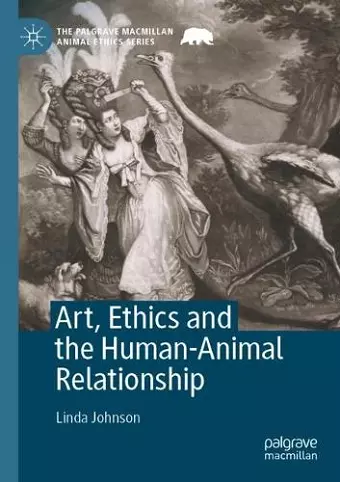Art, Ethics and the Human-Animal Relationship
Format:Paperback
Publisher:Springer Nature Switzerland AG
Published:22nd Sep '22
Currently unavailable, and unfortunately no date known when it will be back
This paperback is available in another edition too:
- Hardback£89.99(9783030788322)

This book examines the works of major artists between the seventeenth and nineteenth centuries, as important barometers of individual and collective values toward non-human life. Once viewed as merely representational, these works can also be read as tangential or morally instrumental by way of formal analysis and critical theories. Chapter Two demonstrates the discrimination toward large and small felines in Genesis and The Book of Revelation. Chapter Three explores the cruel capture of free roaming animals and how artists depicted their furs, feathers and shells in costume as symbols of virtue and vice. Chapter Four identifies speciest beliefs between donkeys and horses. Chapter Five explores the altered Dutch kitchen spaces and disguised food animals in various culinary constructs in still life painting. Chapter Six explores the animal substances embedded in pigments. Chapter Seven examines animals in absentia-in the crafting of brushes. The book concludes with the fish paintings ofWilliam Merritt Chase whose glazing techniques demonstrate an artistic approach that honors fishes as sentient beings.
“This work is a welcome addition to the growing list of scholarly books that take seriously the ways that representations of nonhuman animals have significant and important implications when it comes to larger issues around the treatment of the other animals we share the planet with. One of the many strengths of this book is that it offers concrete and detailed examples of ways that art historians can critically engage with these issues … .” (Keri Cronin, Journal of Animal Ethics, Vol. 13 (2), 2023)
“This work is a welcome addition to the growing list of scholarly books that take seriously the ways that representations of nonhuman animals have significant and important implications when it comes to larger issues around the treatment of the other animals we share the planet with. One of the many strengths of this book is that it offers concrete and detailed examples of ways that art historians can critically engage with these issues … .” (Keri Cronin, Journal of Animal Ethics, Vol. 13 (2), 2023)
ISBN: 9783030788353
Dimensions: unknown
Weight: unknown
308 pages
2021 ed.